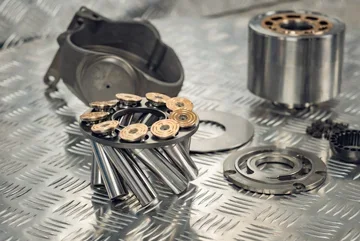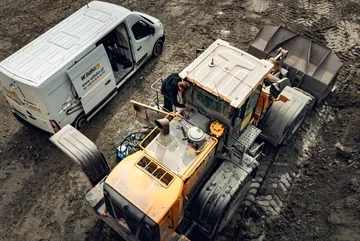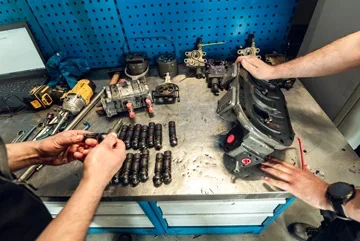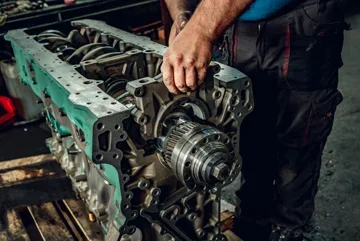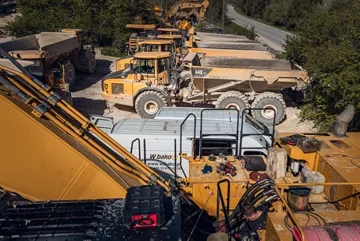Unboxing of the Volvo D7D Engine
In a world of increasingly complex technological solutions, the Volvo D7D engine stands out as the last bastion of reliability and solid construction. In our latest video material, we take a close look at it – welcome to the unboxing of this exceptional power unit.
A Design That Still Impresses
The Volvo D7D is an engine that, contrary to appearances, has a lot in common with Deutz units – their design was the starting point, and Volvo made modifications tailored to its own needs. What distinguishes this unit?
- Fuel system based on pumps with additional coils.
- Fuel dosing control via a fuel rail and computer, without Common Rail technology.
- Traditional injectors and classic control through the camshaft.
All of this makes this engine the last representative of solid, analog solutions.
Refined Design and Sensor Precision
Although the D7D is a mechanical design, it is not lacking in sensors – especially in versions with crawler excavators:
- Intercooler, turbocharger, and intake manifold form an extensive intake system.
- Revolution sensor at the oil pump allows for precise engine operation control.
- The engine breather is connected to the intake manifold – to meet environmental requirements.
Thanks to this, the engine was ready for new challenges, while not losing its classic soul.
Why Avoid the Successor – Volvo D7E?
In the material, we also compare the D7D with its successor – the D7E engine, which is equipped with a Common Rail system. Unfortunately, with this modernity came problems:
- Cylinder sleeves drop in the block, leading to burning of the head gaskets.
- Compression blow-by occurs into the cooling system.
- Durability and reliability are no longer at the same level.
In the video, we show exactly what this flaw consists of – using another, but very similar engine block as an example.
Summary: The Last "Good" Volvo Engine?
The Volvo D7D engine is a design that still gains recognition from mechanics and heavy machinery operators. It combines mechanical solutions with basic measurement, while avoiding typical problems associated with Common Rail.
The entire film can be seen here.













